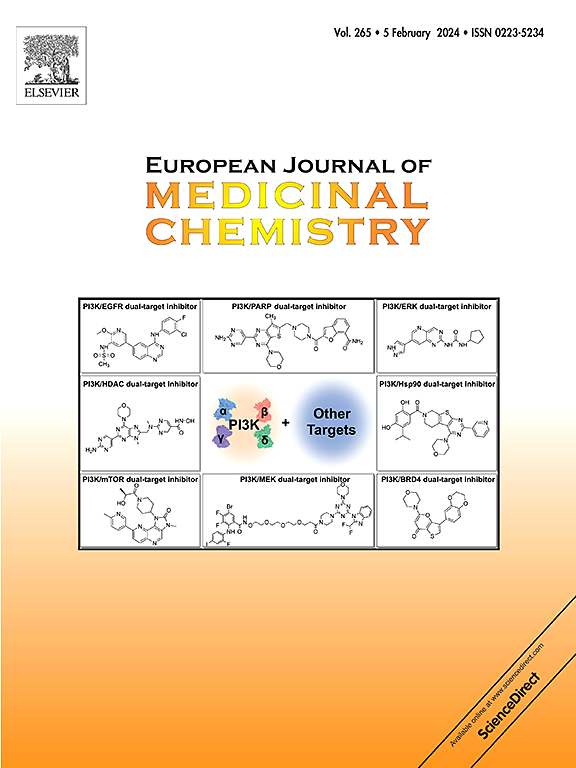Recent advance of hypoxia-inducible factor prolyl hydroxylases inhibitors for anemia therapy
IF 5.9
2区 医学
Q1 CHEMISTRY, MEDICINAL
引用次数: 0
Abstract
Recent advancements in prolyl hydroxylase domain enzyme (PHD) inhibitors have revolutionized anemia treatment by targeting hypoxia-inducible factor (HIF) pathways. Initially, PHD enzymes were identified as critical regulators of HIF-α degradation under normoxia. The discovery of PHD inhibitors emerged from understanding their role in stabilizing HIF-α, which stimulates erythropoietin (EPO) production and iron metabolism, addressing anemia pathophysiology. Early inhibitors, such as FG-2216, demonstrated proof-of-concept but faced safety concerns, prompting structural optimization to enhance selectivity and pharmacokinetic profiles. Subsequent generations, exemplified by roxadustat, incorporated modifications to reduce off-target effects and improve oral bioavailability, achieving clinical efficacy in renal anemia. Optimization strategies focused on balancing potency, tissue specificity, and minimizing adverse effects. The iterative discovery-to-optimization process underscores the value of PHD inhibitors as templates for novel therapies targeting hypoxia-responsive diseases, while ongoing research addresses challenges in long-term safety and patient-specific response variability. This progress solidifies PHD inhibitors as pivotal tools for anemia management and broader therapeutic innovation.

缺氧诱导因子脯氨酸羟化酶抑制剂治疗贫血的研究进展
脯氨酰羟化酶结构域酶(PHD)抑制剂的最新进展通过靶向缺氧诱导因子(HIF)途径彻底改变了贫血的治疗。最初,PHD酶被确定为常氧条件下HIF-α降解的关键调节因子。PHD抑制剂的发现源于对它们在稳定HIF-α中的作用的理解,HIF-α刺激促红细胞生成素(EPO)的产生和铁的代谢,解决贫血的病理生理问题。早期的抑制剂,如FG-2216,已经证明了概念验证,但面临安全性问题,促使结构优化以提高选择性和药代动力学特征。随后以罗沙司他为例,加入了一些修饰物,以减少脱靶效应,提高口服生物利用度,取得了治疗肾性贫血的临床疗效。优化策略侧重于平衡效力、组织特异性和最小化不良反应。从发现到优化的迭代过程强调了PHD抑制剂作为针对缺氧反应性疾病的新疗法模板的价值,同时正在进行的研究解决了长期安全性和患者特异性反应变异性方面的挑战。这一进展巩固了PHD抑制剂作为贫血管理和更广泛的治疗创新的关键工具。
本文章由计算机程序翻译,如有差异,请以英文原文为准。
求助全文
约1分钟内获得全文
求助全文
来源期刊
CiteScore
11.70
自引率
9.00%
发文量
863
审稿时长
29 days
期刊介绍:
The European Journal of Medicinal Chemistry is a global journal that publishes studies on all aspects of medicinal chemistry. It provides a medium for publication of original papers and also welcomes critical review papers.
A typical paper would report on the organic synthesis, characterization and pharmacological evaluation of compounds. Other topics of interest are drug design, QSAR, molecular modeling, drug-receptor interactions, molecular aspects of drug metabolism, prodrug synthesis and drug targeting. The journal expects manuscripts to present the rational for a study, provide insight into the design of compounds or understanding of mechanism, or clarify the targets.

 求助内容:
求助内容: 应助结果提醒方式:
应助结果提醒方式:


